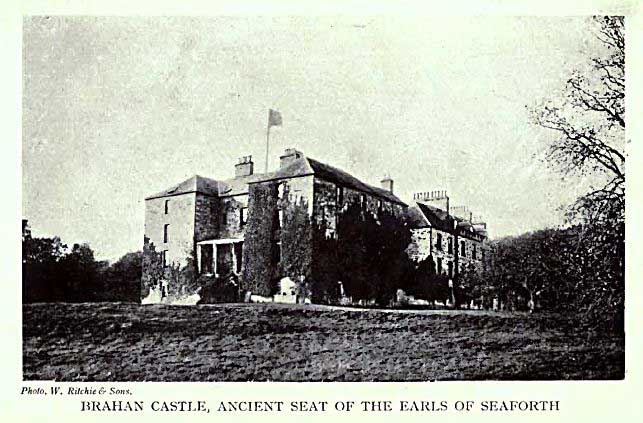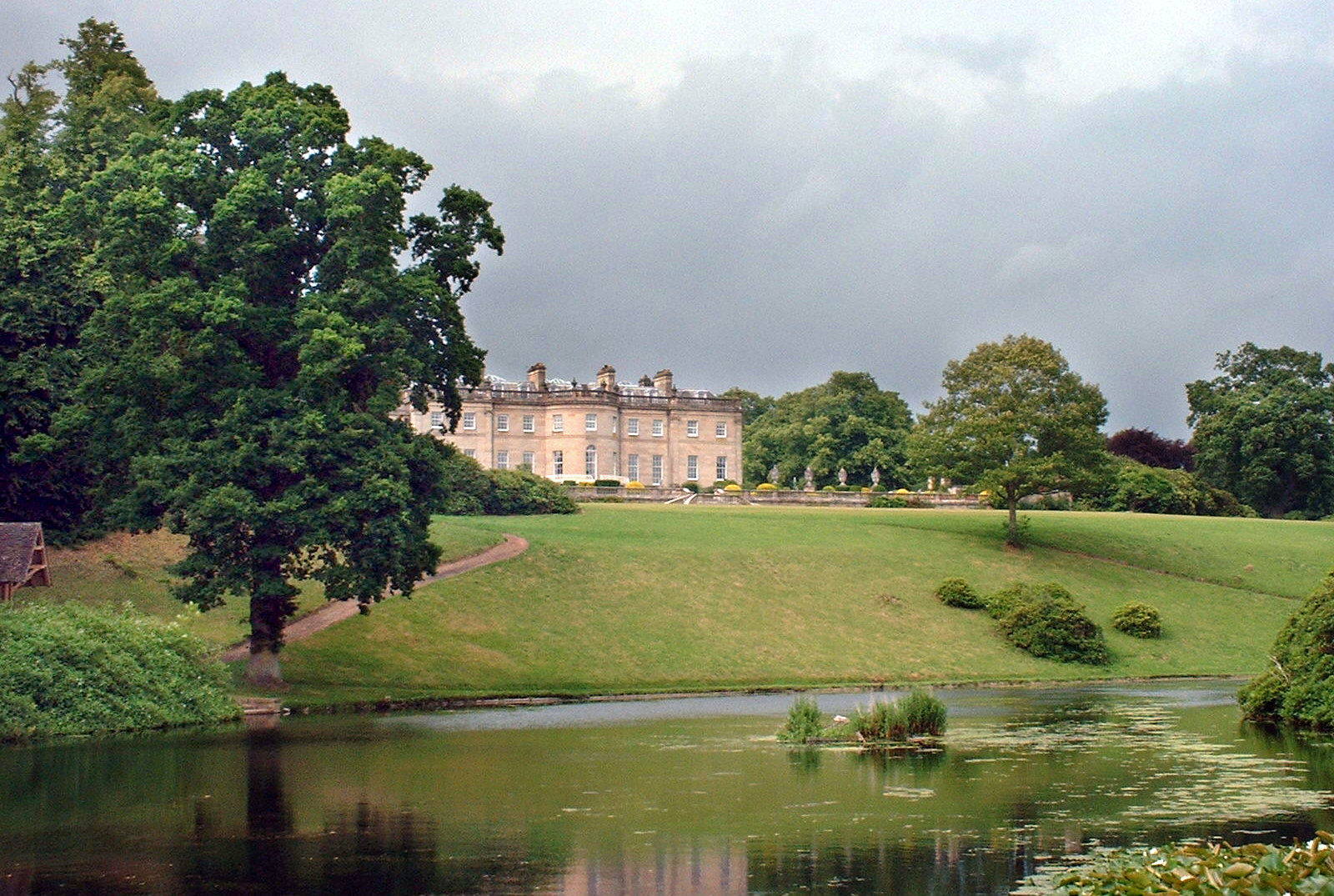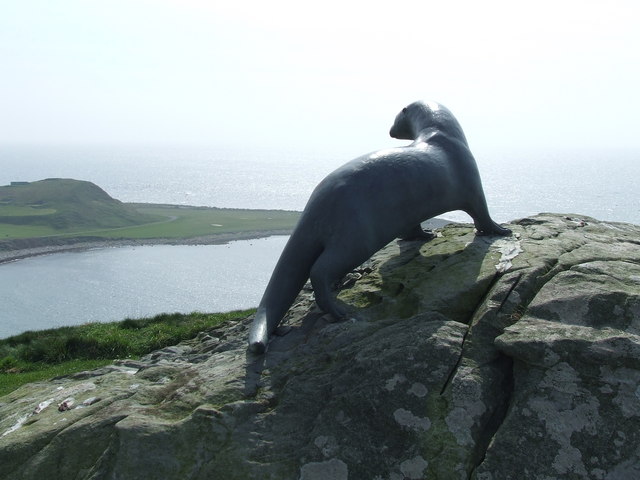|
Brahan Castle
Brahan Castle was situated south-west of Dingwall, in Easter Ross, Highland Scotland. The castle belonged to the Earls of Seaforth, chiefs of the Clan Mackenzie, who dominated the area. History Brahan Castle was built by Colin Mackenzie, 1st Earl of Seaforth in 1611. Kenneth Mackenzie, a labourer on the estate, was a reputed seer who made a number of prophecies in the later 17th century. He is remembered as the Brahan Seer. The Mackenzies were prominent Jacobites, and took part in the Jacobite risings of 1715, 1719 and 1745. The Siege of Brahan took place in November 1715. William Mackenzie, 5th Earl of Seaforth, was attainted, forfeiting the estate, which in 1725 became the headquarters of General Wade during his "pacification" of the Highlands. After the later Jacobite rising of 1745, the Mackenzies were the first clan to surrender, being forced to swear allegiance to the British Crown on the steps of the castle. The estate was later sold back to the Mackenzie fami ... [...More Info...] [...Related Items...] OR: [Wikipedia] [Google] [Baidu] |
Francis Mackenzie, 1st Baron Seaforth
Lieutenant-General Francis Humberston Mackenzie, 1st Baron Seaforth, (9 June 1754 – 11 January 1815) was a British politician, soldier, and botanist. He was Chief of the Highland Clan Mackenzie, as which he raised the renowned 78th (Highlanders) Regiment of Foot. Early life Mackenzie was the second son of Major William Mackenzie (d. 12 March 1770), who was the son of the Hon. Alexander Mackenzie, and the grandson of Kenneth Mackenzie, 4th Earl of Seaforth. Francis's mother was Mary, the daughter and heiress of Matthew Humberston of Humberston, Lincolnshire. On the death of his elder brother Colonel Thomas Frederick Mackenzie Humberston in 1783, Francis Mackenzie became the last male heir of the attainted Earls of Seaforth.Sir James Balfour Paul, ''The Scots Peerage'', volume VII (Edinburgh, David Douglas, 1910), at pages 513–514 When he was about twelve years of age, Francis contracted scarlet fever, which incurred the loss of his ability to hear and almost all of his a ... [...More Info...] [...Related Items...] OR: [Wikipedia] [Google] [Baidu] |
Ross And Cromarty
Ross and Cromarty ( gd, Ros agus Cromba), sometimes referred to as Ross-shire and Cromartyshire, is a variously defined area in the Highlands and Islands of Scotland. There is a registration county and a lieutenancy area in current use, the latter of which is in extent. Historically there has also been a constituency of the Parliament of the United Kingdom (1832 to 1983), a local government county (1890 to 1975), a district of the Highland local government region (1975 to 1996) and a management area of the Highland Council (1996 to 2007). The local government county is now divided between two local government areas: the Highland area and Na h-Eileanan Siar (the Western Isles). Ross and Cromarty border Sutherland to the north and Inverness-shire to the south. The county was formed by the uniting of the shires of Ross-shire and Cromartyshire. Both these shires had themselves been formed from the historic province of Ross, out of which the many enclaves and exclaves ... [...More Info...] [...Related Items...] OR: [Wikipedia] [Google] [Baidu] |
Demolished Buildings And Structures In Scotland
Demolition (also known as razing, cartage, and wrecking) is the science and engineering in safely and efficiently tearing down of buildings and other artificial structures. Demolition contrasts with deconstruction, which involves taking a building apart while carefully preserving valuable elements for reuse purposes. For small buildings, such as houses, that are only two or three stories high, demolition is a rather simple process. The building is pulled down either manually or mechanically using large hydraulic equipment: elevated work platforms, cranes, excavators or bulldozers. Larger buildings may require the use of a wrecking ball, a heavy weight on a cable that is swung by a crane into the side of the buildings. Wrecking balls are especially effective against masonry, but are less easily controlled and often less efficient than other methods. Newer methods may use rotational hydraulic shears and silenced rock-breakers attached to excavators to cut or break through ... [...More Info...] [...Related Items...] OR: [Wikipedia] [Google] [Baidu] |
Former Castles In Scotland
A former is an object, such as a template, gauge or cutting die, which is used to form something such as a boat's hull. Typically, a former gives shape to a structure that may have complex curvature. A former may become an integral part of the finished structure, as in an aircraft fuselage, or it may be removable, being using in the construction process and then discarded or re-used. Aircraft formers Formers are used in the construction of aircraft fuselage, of which a typical fuselage has a series from the nose to the empennage, typically perpendicular to the longitudinal axis of the aircraft. The primary purpose of formers is to establish the shape of the fuselage and reduce the column length of stringers to prevent instability. Formers are typically attached to longerons, which support the skin of the aircraft. The "former-and-longeron" technique (also called stations and stringers) was adopted from boat construction, and was typical of light aircraft built until the a ... [...More Info...] [...Related Items...] OR: [Wikipedia] [Google] [Baidu] |
Inventory Of Gardens And Designed Landscapes
The ''Inventory of Gardens and Designed Landscapes in Scotland'' is a listing of gardens and designed landscapes of national artistic and/or historical significance, in Scotland. The Inventory was originally compiled in 1987, although it is a continually evolving list. From 1991 it was maintained by Historic Scotland and Scottish Natural Heritage, and is now updated by a dedicated team within Historic Environment Scotland. As of 2016 the Inventory includes over 300 sites across Scotland. Background Unlike listed building status, there is no statutory basis for the Inventory, and inclusion of a site on the Inventory does not offer any legal protection. However, under the Town and Country Planning (Development Management Procedure) (Scotland) Regulations 2013, planning authorities are required to consult Historic Environment Scotland on "development which may affect a historic garden or designed landscape".Historic Environment Scotland Policy Statement (2016) pp.24–26, para 2.77 T ... [...More Info...] [...Related Items...] OR: [Wikipedia] [Google] [Baidu] |
Castles In Highland (council Area)
A castle is a type of fortified structure built during the Middle Ages predominantly by the nobility or royalty and by military orders. Scholars debate the scope of the word ''castle'', but usually consider it to be the private fortified residence of a lord or noble. This is distinct from a palace, which is not fortified; from a fortress, which was not always a residence for royalty or nobility; from a ''pleasance'' which was a walled-in residence for nobility, but not adequately fortified; and from a fortified settlement, which was a public defence – though there are many similarities among these types of construction. Use of the term has varied over time and has also been applied to structures such as hill forts and 19th-20th century homes built to resemble castles. Over the approximately 900 years when genuine castles were built, they took on a great many forms with many different features, although some, such as curtain walls, arrowslits, and portcullises, were ... [...More Info...] [...Related Items...] OR: [Wikipedia] [Google] [Baidu] |
World War II
World War II or the Second World War, often abbreviated as WWII or WW2, was a world war that lasted from 1939 to 1945. It involved the World War II by country, vast majority of the world's countries—including all of the great powers—forming two opposing military alliances: the Allies of World War II, Allies and the Axis powers. World War II was a total war that directly involved more than 100 million Military personnel, personnel from more than 30 countries. The major participants in the war threw their entire economic, industrial, and scientific capabilities behind the war effort, blurring the distinction between civilian and military resources. Air warfare of World War II, Aircraft played a major role in the conflict, enabling the strategic bombing of population centres and deploying the Atomic bombings of Hiroshima and Nagasaki, only two nuclear weapons ever used in war. World War II was by far the List of wars by death toll, deadliest conflict in hu ... [...More Info...] [...Related Items...] OR: [Wikipedia] [Google] [Baidu] |
Baron Seaforth
Baron is a rank of nobility or title of honour, often hereditary, in various European countries, either current or historical. The female equivalent is baroness. Typically, the title denotes an aristocrat who ranks higher than a lord or knight, but lower than a viscount or count. Often, barons hold their fief – their lands and income – directly from the monarch. Barons are less often the vassals of other nobles. In many kingdoms, they were entitled to wear a smaller form of a crown called a ''coronet''. The term originates from the Latin term , via Old French. The use of the title ''baron'' came to England via the Norman Conquest of 1066, then the Normans brought the title to Scotland and Italy. It later spread to Scandinavia and Slavic lands. Etymology The word '' baron'' comes from the Old French , from a Late Latin "man; servant, soldier, mercenary" (so used in Salic law; Alemannic law has in the same sense). The scholar Isidore of Seville in the 7th century t ... [...More Info...] [...Related Items...] OR: [Wikipedia] [Google] [Baidu] |
James Stewart-Mackenzie, 1st Baron Seaforth
Colonel James Alexander Francis Humberston Stewart-Mackenzie, 1st Baron Seaforth, (9 November 1847 – 3 March 1923) was a Scottish soldier, who was regarded by many as chief of Clan Mackenzie. Stewart-Mackenzie was the son of Keith William Stewart-Mackenzie (a son of James Alexander Stewart-Mackenzie) and Hannah Charlotte (daughter of James Joseph Hope-Vere). His sister became a society hostess and politician, known as Mary Jeune, Baroness St Helier. His grandmother was Mary Elizabeth Frederica Mackenzie, daughter and heiress of Francis Mackenzie, 1st Baron Seaforth, whose title had become extinct when his four sons all predeceased him. He was educated at Glenalmond College and in 1867 was commissioned into the 9th Lancers. He served for over thirty years, retiring as the regiment's colonel. He fought at Maidan, Kabul, Sherpur and Kandahar in the Afghan War of 1878–1880. He then served as military secretary to Sir Mountstuart Grant Duff, Governor of Madras. Foll ... [...More Info...] [...Related Items...] OR: [Wikipedia] [Google] [Baidu] |
Scottish Estate Houses
Estate houses in Scotland or Scottish country houses, are large houses usually on landed estates in Scotland. They were built from the sixteenth century, after defensive castles began to be replaced by more comfortable residences for royalty, nobility and local lairds. The origins of Scottish estate houses are in aristocratic emulation of the extensive building and rebuilding of royal residences, beginning with Linlithgow, under the influence of Renaissance architecture. In the 1560s the unique Scottish style of the Scots baronial emerged, which combined features from medieval castles, tower houses, and peel towers with Renaissance plans, in houses designed primarily for residence rather than defence. After the Restoration (1660) the work of architect Sir William Bruce introduced to Scotland a new phase of classicising architecture, in the shape of royal palaces and estate houses incorporating elements of the Palladian style. In the eighteenth century Scotland produced some of t ... [...More Info...] [...Related Items...] OR: [Wikipedia] [Google] [Baidu] |
Glasserton
Glasserton is a civil parish in Dumfries and Galloway, south-west Scotland. It is on the Machars peninsula, in the traditional county of Wigtownshire. The parish is about in length, varying in breadth from , and contains . The Parish It is thought that the name derives from the Saxon for "bare hill". It is located near Whithorn and includes the village of Monreith, the area called Kirkmaiden and two mansions, namely Glasserton Park and Physgill, together with Woodfall Gardens. The ''Statistical Account'' remarks that the church "stands near to Glasserton-House, and is romantically embosomed in wood, which sheds around it a vernerable gloom, as if it were a druidical temple, or the sacred grove of some Syrian idol." Legend has it that Saint Ninian, otherwise called Saint Ringan, the first Bishop of Galloway, lived for a while in a cave near Physgill by way of penitence, and he was the founder of Whithorn Abbey. Loch and sea fishing are available, and the area is a haven for ... [...More Info...] [...Related Items...] OR: [Wikipedia] [Google] [Baidu] |

.jpg)







